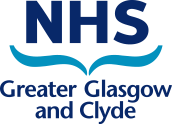Updated Guideline - Treatment of IDA
UPDATED GUIDELINE: Treatment of Iron Deficiency Anaemia in Adults: Oral and Intravenous Iron Therapy
An updated GGC guideline on the Treatment of Iron Deficiency Anaemia (IDA) is available here.
The following changes have been made to the content:
- Oral iron section updated with additional information on how to manage poor response/ compliance and includes the latest information on reduced doses.
- The recommended initial dose of oral iron therapy is now a once daily dose of 50-100mg elemental iron (e.g. ferrous sulfate 200mg once a day or ferrous fumarate 210mg once a day). See ‘Treatment of IDA – Oral Iron Therapy’ blog for further details on this change.
- Generic name change for Monofer® (from iron isomaltoside 1000 to ferric derisomaltose).
- Prescribing and administration information for Ferinject® and Monofer® reformatted to include checklist for administration on same page.
An abbreviated version of this guideline is also available in the GGC Adult Therapeutics Handbook here.
The full guideline is intended for use in adult patients in acute and primary care settings. The following clinical situations are not covered: pregnancy, postpartum anaemia, surgery/trauma, paediatrics (<16 years) and patients with chronic kidney disease stages 4-5.
The guideline includes information on:
-
How to diagnose IDA
-
Treatment with oral iron therapy
-
Treatment with intravenous (IV) iron therapy
-
How to monitor response to treatment.
In addition, a number of appendices are included. These provide information on two IV iron products, Ferinject® (ferric carboxymaltose) and Monofer® (ferric derisomaltose):
-
How to prescribe and administer by IV infusion including an incorporated checklist for use pre-infusion, during and post infusion
-
A patient /relative information leaflet.
Key messages on the management of IDA:
-
Oral iron is the first line treatment of choice*
-
Investigations to determine the underlying cause should be considered in parallel with treatment
-
IV iron should be reserved as second line
* In patients with heart failure with reduced ejection fraction, New York Heart Association (NYHA) class III with an left ventricular ejection fraction (LVEF) of ≤ 45%, or NYHA class II with an LVEF ≤ 40%, who have a Hb level of 95 to 135 g/L) and iron deficiency (defined as ferritin < 100 micrograms/L or ferritin < 300 micrograms/L if TSAT < 20%), oral iron therapy is not effective in iron repletion, and does not improve exercise capacity. IV iron should be used in preference to oral iron in this patient group.
A series of blog articles relating to this guideline are available:
Diagnosis of IDA - Iron Studies
Treatment of IDA – Oral Iron Therapy
Treatment of IDA - IV iron therapy
Originally published 21/01/19, updated 02/09/2022 and again 05/12/2022.
Medicines Update blogs are correct at the time of publication.
